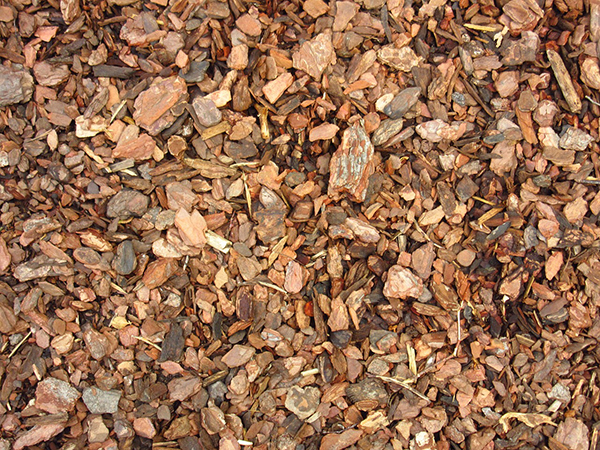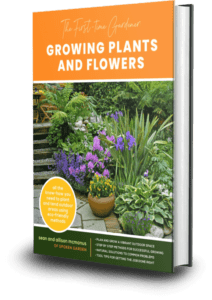What You’ll Learn:
- Tips on whether you should remove old mulch before adding new mulch.
- Links and videos for further resources and education.

Mulch can add so many benefits to your yard and garden.
- Usually, mulch can use a refresher once a year to keep garden areas healthy so the question is: should I remove old mulch, or leave it? The answer depends on the type of mulch you are using.In “Should I Remove Old Mulch (Before Adding More)” – DIY Garden Minute Ep. 81 – learn what to do with your old mulch.This episode is meant for any gardener who wants to learn how to best care for their garden and landscape areas.If you are not sure where to get started on mulching, go to our Mulching Start Here page to get the basics.
Removing Old Mulch Material
- So, should you remove your old mulch material before replacing it with new mulch? The quick answer is usually no, and yes.Unfortunately, it is not so easy to answer because it depends on the type of mulch material you have used.Check out our do’s and don’ts below.
Don’t Remove Old Mulch
- Under most circumstances, landscapers and gardeners have chosen to use a natural, least-processed or semi-processed mulch material to control weeds, retain moisture, insulate plant roots, control erosion, and to improve soil.These mulches don’t need to be removed if you are just adding more of the same over the top.In fact, adding the same mulch over the top helps create different layers of mulch to continue to breakdown over time to keep building health and sustainable soil.It’s the same concept as continual annual leaf accumulation in deciduous tree forests.
Good examples of this arborist mulch or pine needle mulch because they can improve your garden in so many ways.
Both types of mulch break down over time and improve your soil for structure, nutrient availability, and water infiltration.
These two mulches, along with other natural mulches, need to then be replenished once a year or so right over the old mulch.
This equals less work and worry, and adds to your gardens soil nutrients, water retention, and soooo much more.
With these types of mulch, you can simply add the new mulch over the old mulch and judge the new amount to add by the thickness of the existing mulch.
In general, don’t add more than 2-inches of new mulch or you run the risk of literally burying plant roots too deep below the new mulch surface for air and water to reach.
Do Remove Old Mulch
- You do want to remove old mulch completely if you are using a mulch material like engineered wood fiber or other engineered material that doesn’t breakdown to useful natural components in the garden and environment.For these materials, you should fully remove the old material that’s broken down before adding the new engineered material.This is because certain engineered mulches as they break down start to get a spongy feel to them and can act more as a boggy, mucky mess than an actual mulch.This can lead to too much water retention and even higher compaction. So, remove these materials if they fit this description or have other negative effects on your garden plants.
Most gardeners and landscape professionals use naturally sourced and processed materials, though.
Importance of Mulching
- Most gardeners agree a good mulch is an important maintenance step in your garden.Mulch can be used for so many reasons, including:Weed control
Soil moisture retention
Root protection
Encouraging good microorganisms
Improving general soil health
Aesthetics
All of these reasons and more have contributed to your choice of using mulch in your landscape.So, what happens to your old mulch when you need to add new mulch?Read on to find out more.
Pitchforks, and Other Mulching Tools We Recommend
- We have spent multiple seasons mulching all our garden areas and these tools are highly recommended for successful mulch spreading.Don’t risk injury by not using a wheelbarrow, pitchfork, or other necessary items.
Round Shovel
Hard Metal Rake
- Pitch Fork
Tarp
- Wheelbarrow
Garden rake
A Blower for cleaning
Or, if you need to shop for other garden plants for this spring, click the link below.
Click here for the most up to date deals and plants on Amazon!
Pitchforks, and Other Mulching Tools We Recommend
- Whether you want to control weeds, retain soil moisture, or reduce soil erosion, adding new mulch is of great benefit.Depending on the type of mulch material you have, you may need to remove old mulch or add new mulch on top.Now we want to hear from you!What type of mulch material are you using in your yard?
Let us know by leaving a quick comment below. Thanks!
That’s all for this DIY garden minute episode!
You can find other one-minute topics on our podcast page at spokengarden.com/podcast
On Instagram or Pinterest under @SpokenGarden (all one word) to follow or leave us a comment.
Find us on your favorite podcast platform and Alexa through MyPod or AnyPod!
Thanks for Listening!
That’s all for this podcast episode! You can find other beginning gardener topics on
our podcast page by clicking here or go to SpokenGarden.com and click on the “Listen” tab. Also find us on your favorite podcast platform and smart speaker!
Share our show or follow us on
Subscribe on
*Spoken Garden is a participant in the Amazon Services LLC Associates Program, an affiliate advertising program designed to provide a means for sites to earn advertising fees by advertising and linking to Amazon.com.
- Some of the resources and products below may be affiliate links, meaning we might get paid a commission (at no extra cost to you) if you use that link to make a purchase. Anvil vs Bypass Pruning Shears – DIY Garden Minute Ep. 9 (podcast)Checkout and Pre-Order our New Book: 1st Time Gardener: Growing Plants and Flowers.To Be Released February 9th, 2021! Want to get started, but not sure on what? Go to our Start-Here Page!









